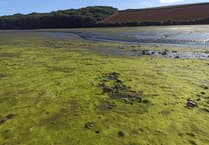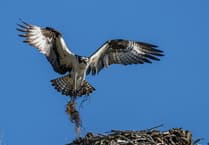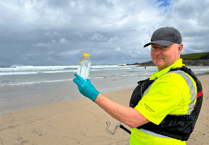A PIONEERING conservation project has brought back pine martens to Dartmoor for the first time in more than a century.
Fifteen pine martens, including eight adult females and seven adult males, were released at secret locations on Dartmoor during September in what conservationists are hailing as a historic step in the restoration of the region’s woodlands and wildlife.
The return is the work of The Two Moors Pine Marten Project and comes after two years of meticulous planning and consultation with local communities.
The project is being lead by the Devon Wildlife Trust.
‘Pine martens are amazingly well adapted for life in the woodland night, with strong claws, lithe bodies, fantastic hearing and even reversible rear ankles helping them to run down trees,’ said Ed Parr Ferris a conservation manager at the trust.
’Stunning members of the weasel family, these rare mammals need our help to return to their former homes in the south west, but we also need their help to bring back the natural balance of wildlife to our woodlands.’
The release of the pine martens is the first phase in the project’s plans to establish a resident population.
In a carefully planned operation, under licenses from Natural England and NatureScot, the animals were health checked by vets before being driven to their new homes in Devon.
Arriving under the cover of darkness each animal was placed in its own specially constructed pen at woodland locations chosen for their seclusion.
.jpeg?width=752&height=500&crop=752:500)
There they were fed and watered by a team of local volunteers and after three days of quiet acclimatisation, the pen doors were opened, and the pine martens were allowed to make their first historic steps into the wild.
The project is now monitoring the progress of the animals through lightweight radio collars. The collars will drop off the animals after six to nine months of use.
The expectation of the project is that the new animals will disperse to establish their own territories. The population is expected to grow gradually over the coming years.
Anyone interested in finding out more about pine martens and the Two Moors Pine Marten Project should go to www.twomoorspinemartens.org.




Comments
This article has no comments yet. Be the first to leave a comment.